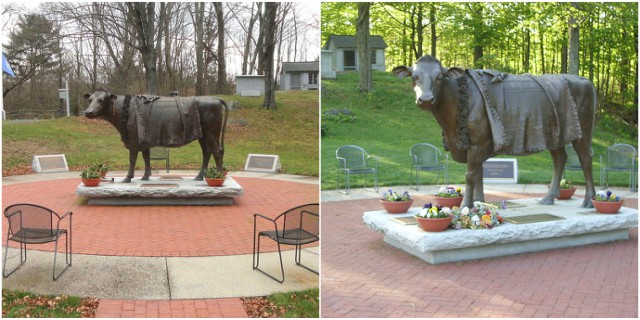In Peace Abbey in Sherborn, Massachusetts, just between the statues of Mother Teresa and Mahatma Gandhi, there is a grave and a life-sized bronze statue of Emily the Cow.
You’re probably wondering why Emily the Cow deserved a statue in Peace Abbey, but there is a pretty good explanation for it. While for many people Emily the Cow does not symbolize anything, for thousands of people the story of Emily the Cow is a symbol of courage and inspiration to embark on the road of vegetarianism.
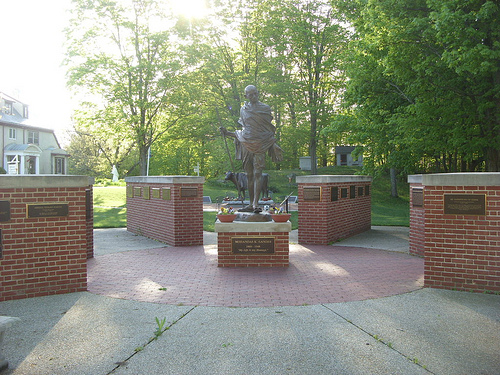
The story of Emily the Cow goes back to 14 November 1995, when she was only three years old and weighed 730 kg (1600 pounds). Emily was one of many cows that were about to face death at a slaughter facility in Hopkinton, Massachusetts, but fate had other plans for Emily.
When workers at the slaughter facility in Hopkinton went on a break, Emily the Cow managed to jump over a five-foot gate and ran for her life. The workers couldn’t believe their eyes when they saw Emily running outside. They tried to catch her, but apparently, Emily was too fast. They didn’t give up and tried for a week to trap her with cachés of hay, but she continued to evade capture.
Emily wasn’t alone in her battle, and many people helped her evade capture. For 40 days, people hid her in their backyards and fed her. In a short period, Emily gained popularity, and her story made the headlines in local newspapers.
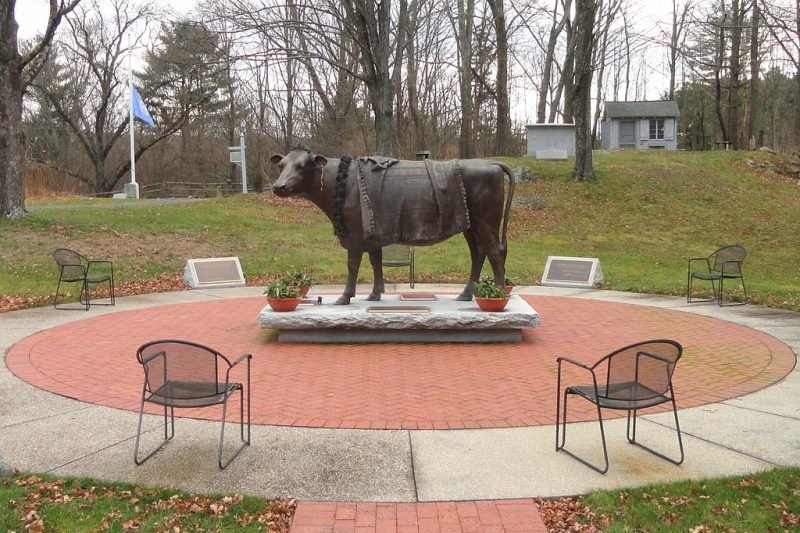
The story of Emily the Cow soon reached the Randa family. When Meg Randa read the story in a local newspaper, she decided to save the cow’s life. The Randa family somehow managed to purchase her from the slaughter facility for one dollar and brought her to live in a sanctuary at Peace Abbey on Christmas Eve.
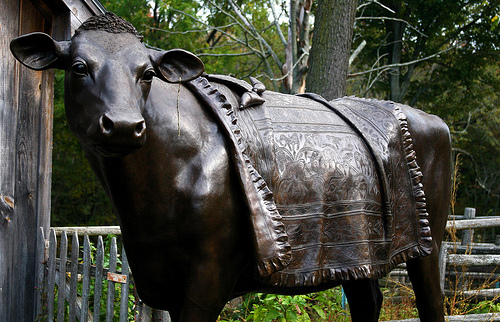
Soon the news of Emily the Cow spread across the country and the globe. She became a national celebrity and folk hero, and visitors from all over the world who admired her bravery came to see Emily. Emily inspired many to embark on the road to vegetarianism and soon became a representative of animal rights and vegetarianism.
Emily the Cow, spent eight years at Peace Abbey in Sherborn, Massachusetts. She died from uterine cancer on 30 March 2003, only a week after a Hindu priest named Krishna Bhatta of the Lakshmi Temple gave her his blessing. She was buried at Peace Abbey between statues of Mother Teresa and Mahatma Gandhi.
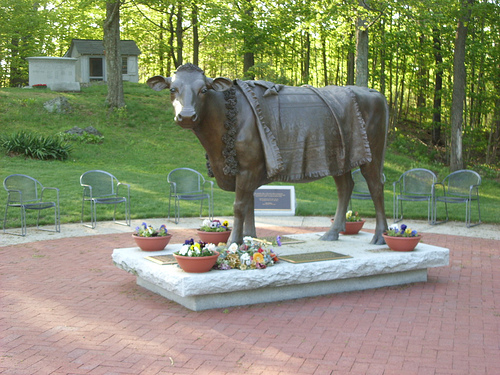
The Randa family asked artist Lado Goudjabidze to sculpt a life-sized bronze statue in her honor.
In April 2003, bits of her hair and blood and a piece of golden thread placed through her ear by the Hindu priest were released into river Ganges at Benares, India.
